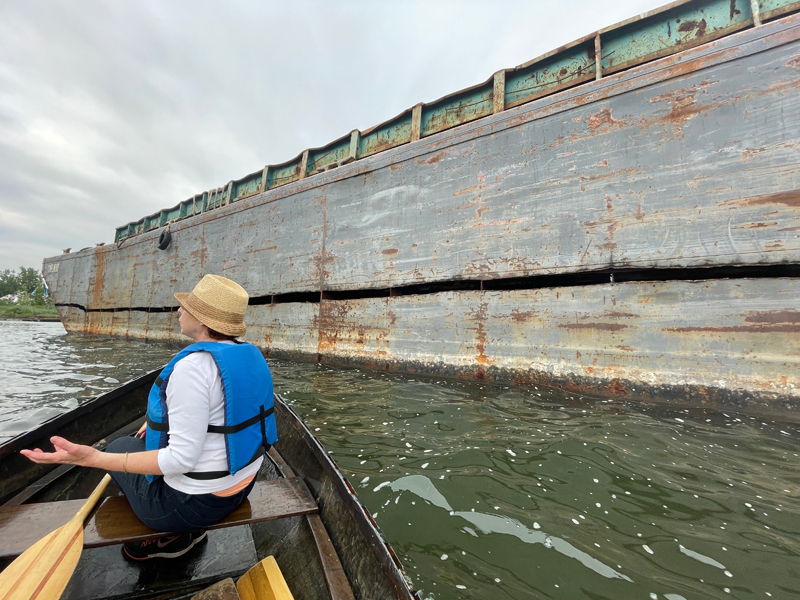
When Elizabeth Albert suggested a trip to the Staten Island boat graveyard,
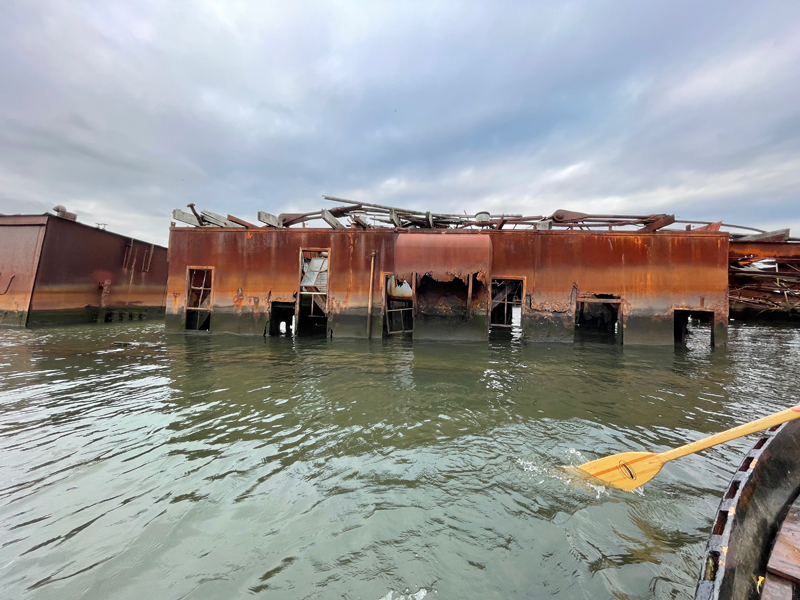
I thought it was a great idea because it connected to a shipwreck discovery that we made in 2012.
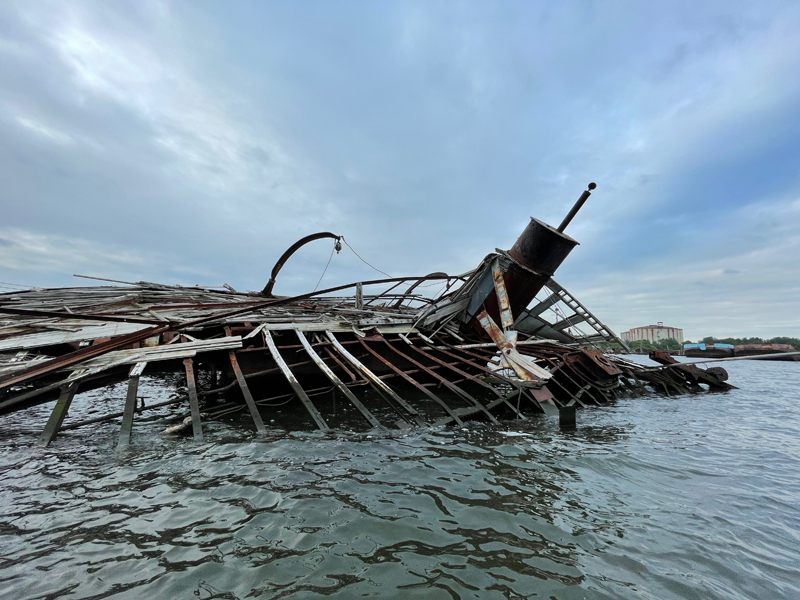
Also, it was perfect for the Tide and Current Taxi theme this year; islands.
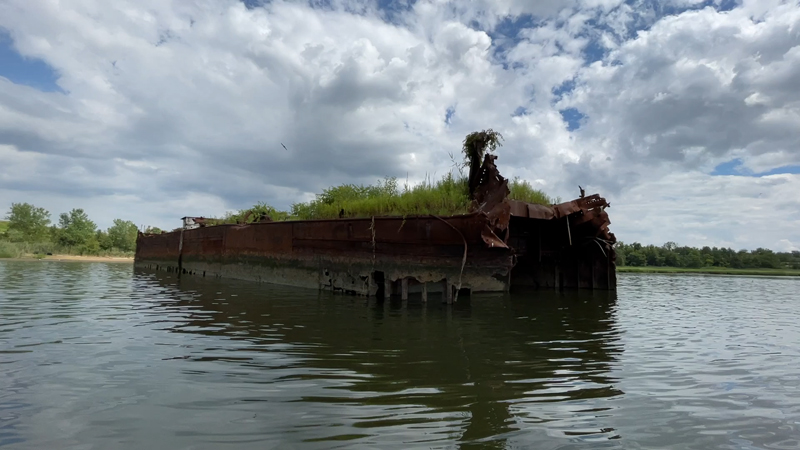
Each ship was a perfect island, stuck in the mud, host to its own ecosystem.
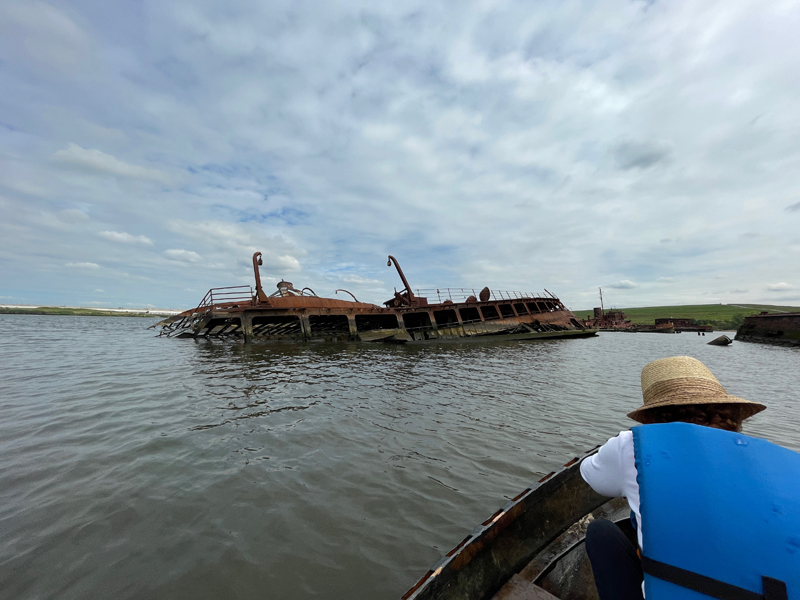
The only problem, the tide was not great for our trip.
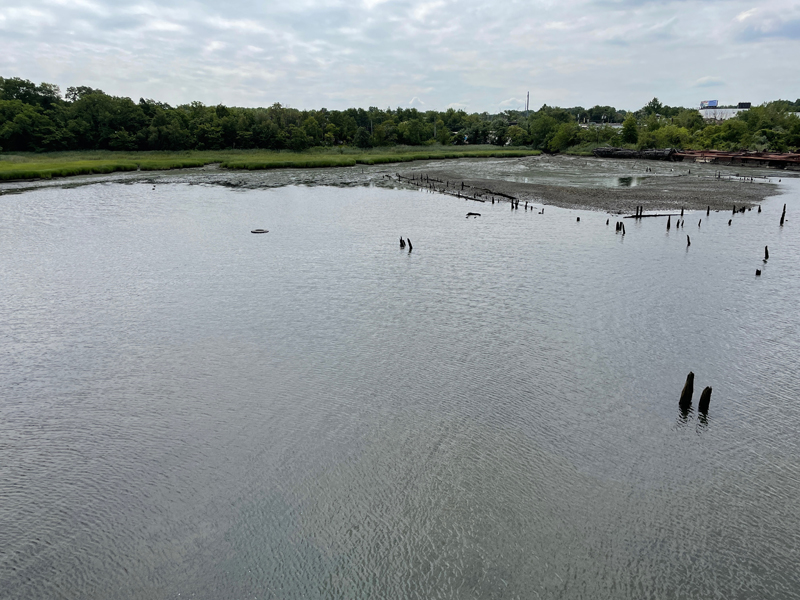
It’s hard to get back through the mudflats when the tide goes out,
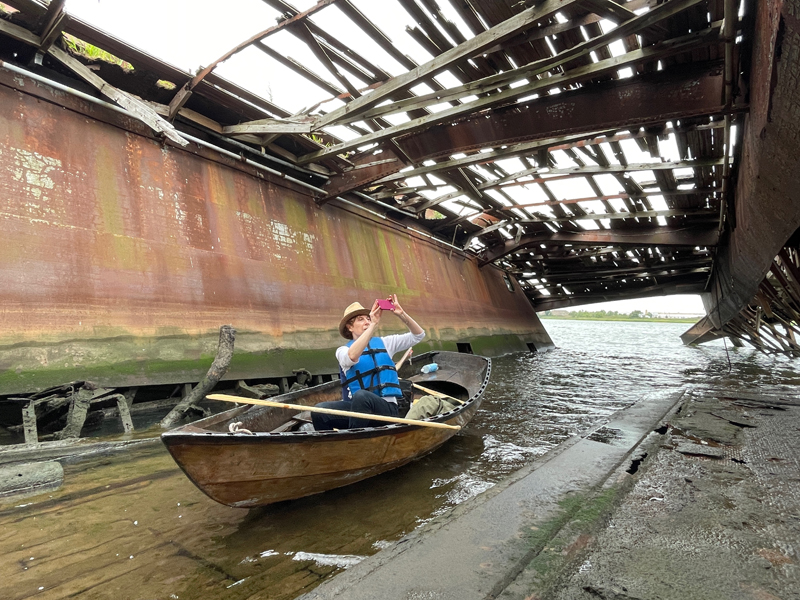
so we would have to stay out for an entire tidal cycle.
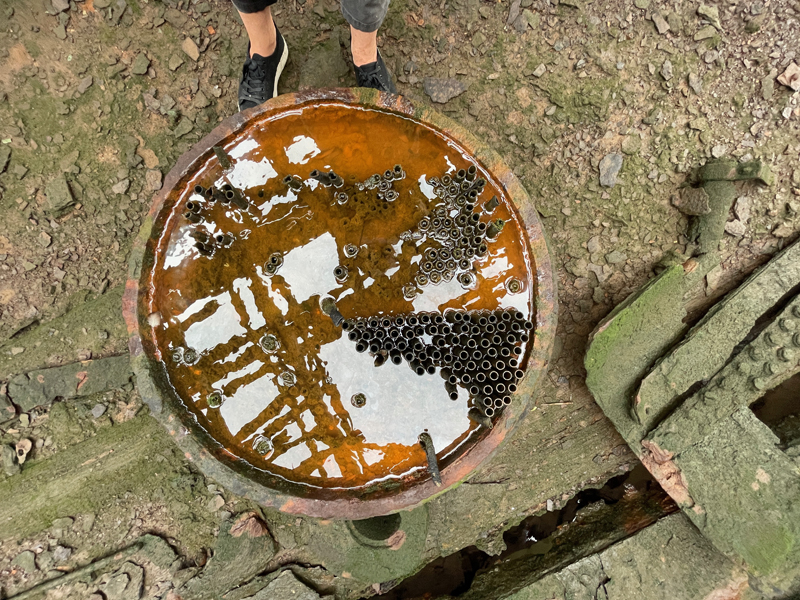
That seemed great to me, the boat graveyard is one of my favorite places to discover slowly
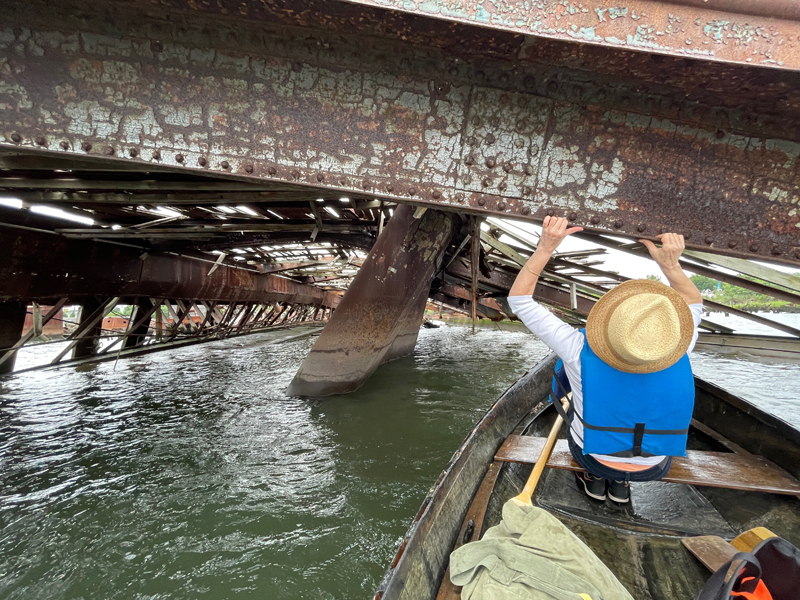
and I knew that Elizabeth would agree.
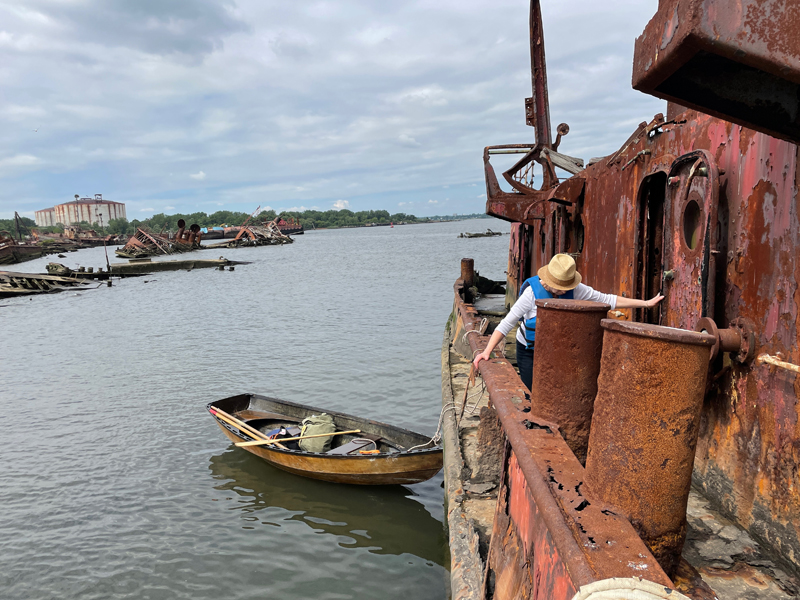
As we explored the wrecks we talked about other sites of historic preservation and the ruins of NYC.
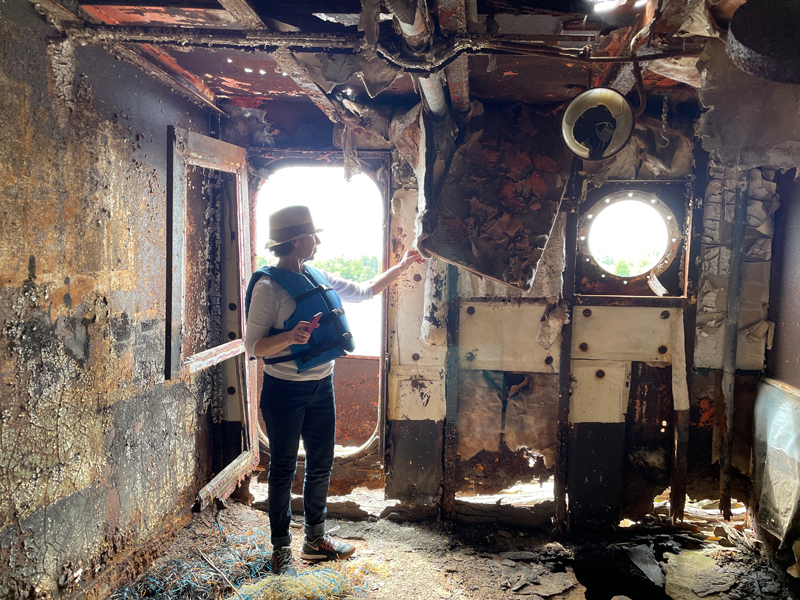
It seems unlikely that anyone will ever care about all this stuff,
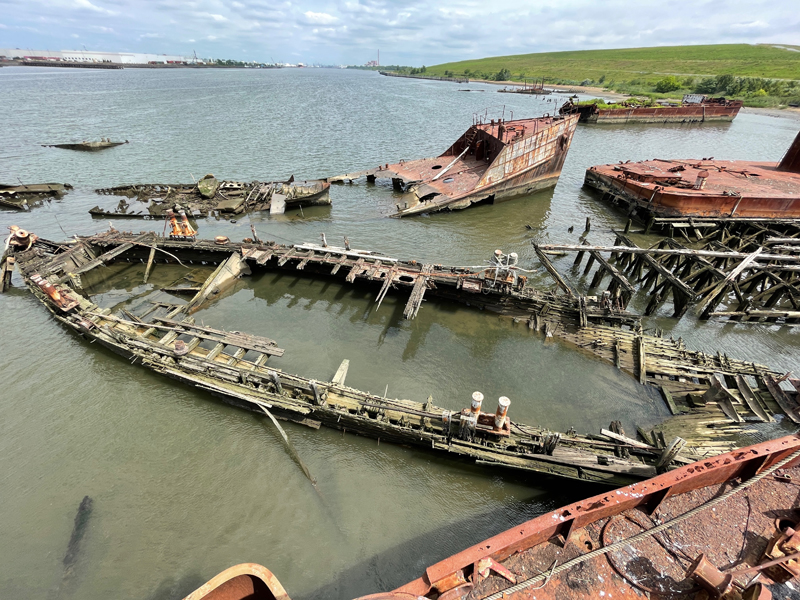
but what a perfect place to study the ingenuity and perhaps imprudence of man.
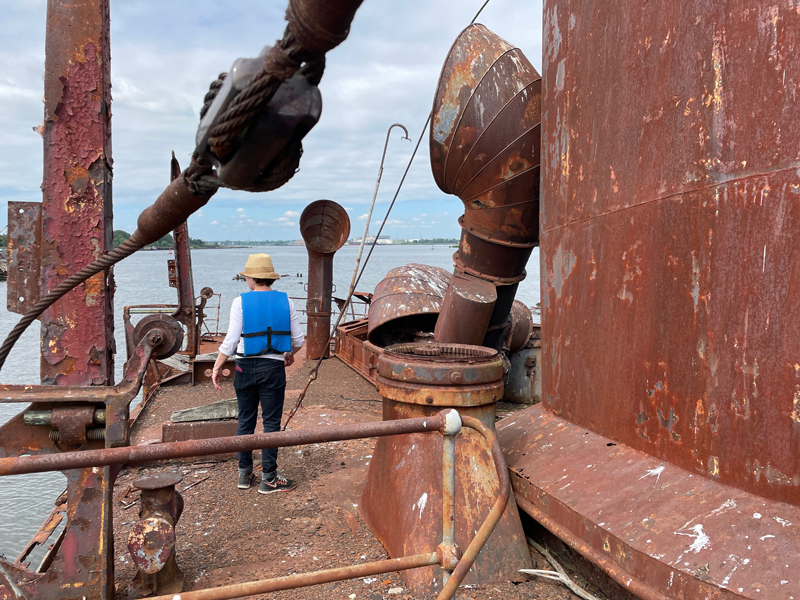
“This one is like being inside a Martin Puryear sculpture,” said Elizabeth.
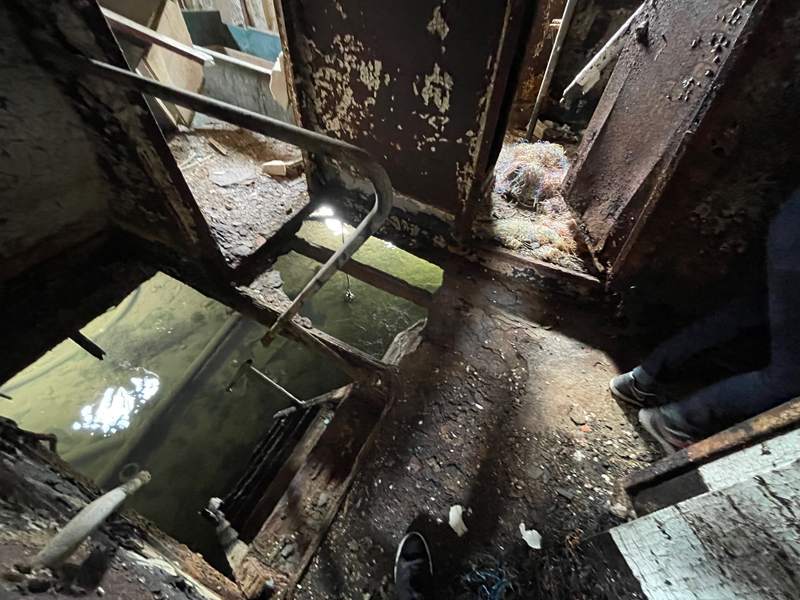
We heard something strange coming from deep inside the ship.
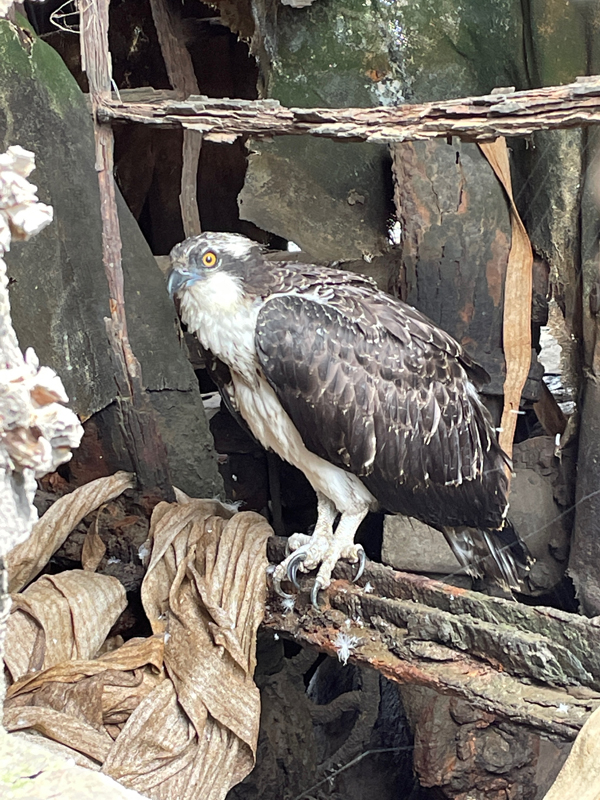
A young osprey seemed trapped in the hull of a boat, but when we left, he turned out to be only trapped by us.
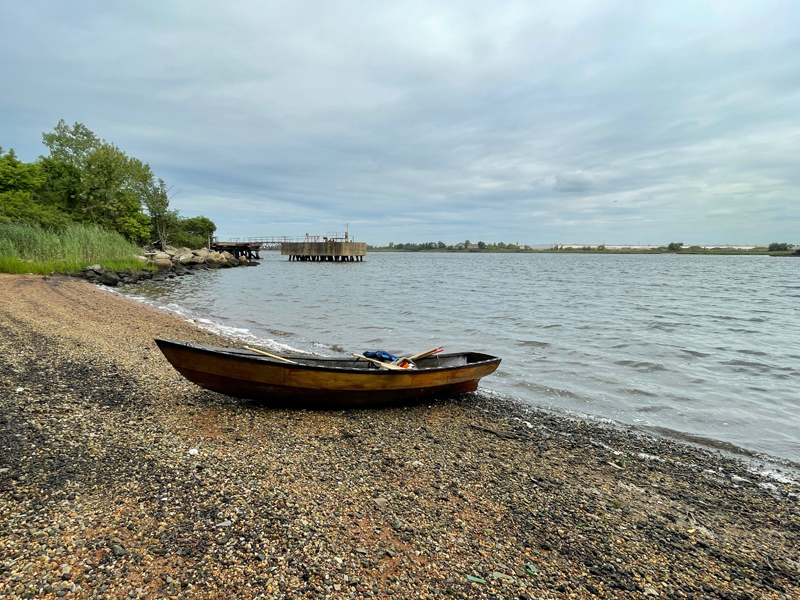
We paddled to a sandy beach to wait for the tide to turn.
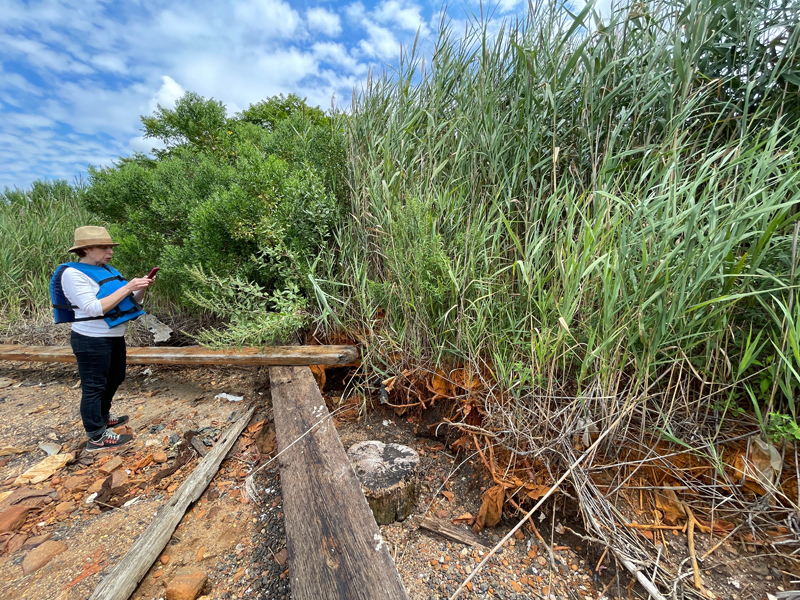
“This is the first time I have been to the beach all summer!” said Elizabeth.
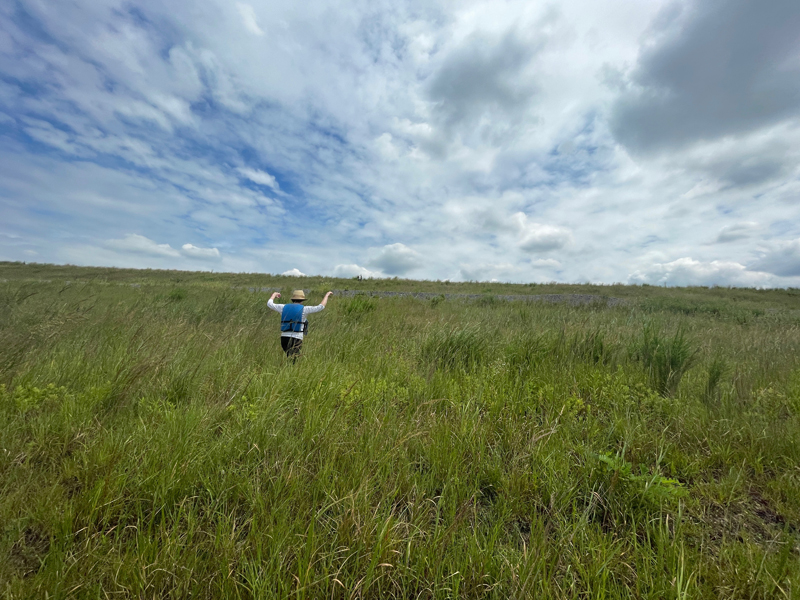
I love that she thinks of this as going to the beach, a tiny scrap of sand beneath the Freshkills landfill.
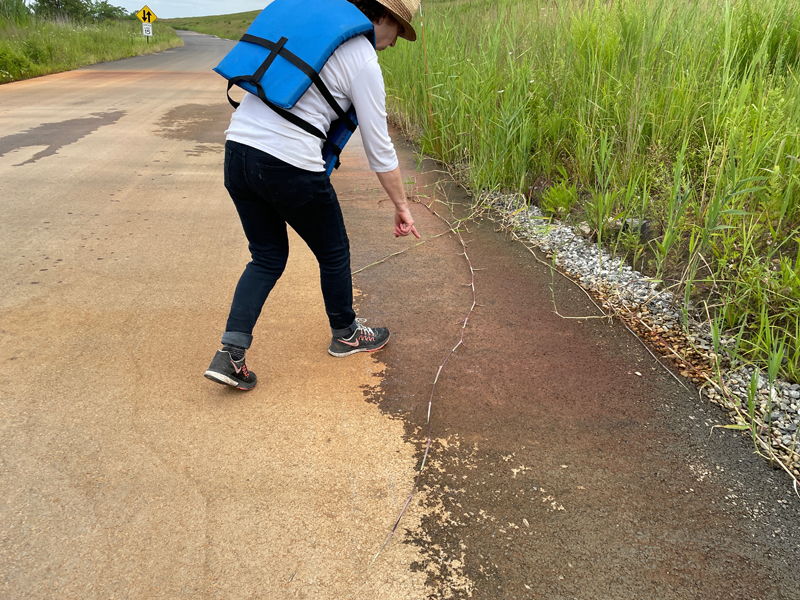
We had just examined a spot where something was seeping out onto the sidewalk.
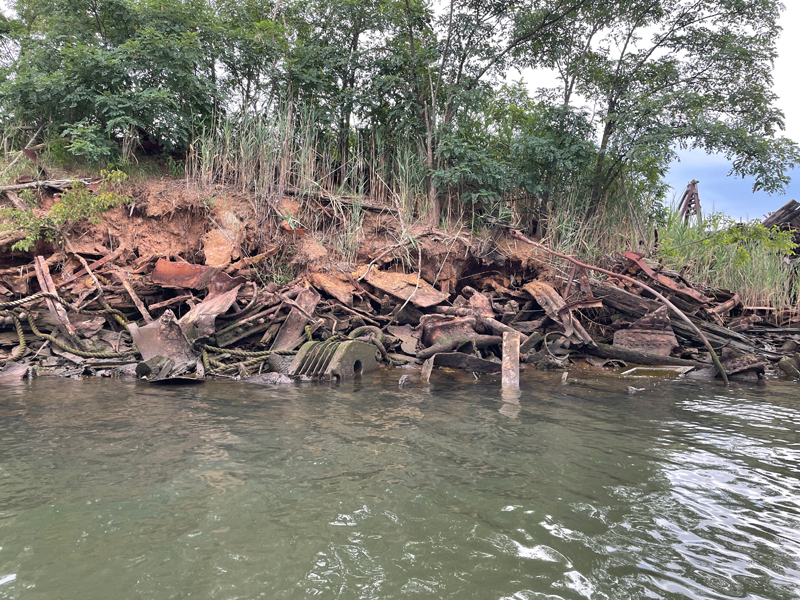
The land under the grass must look like the rest of the shore around us, seemingly made of scrap metal.
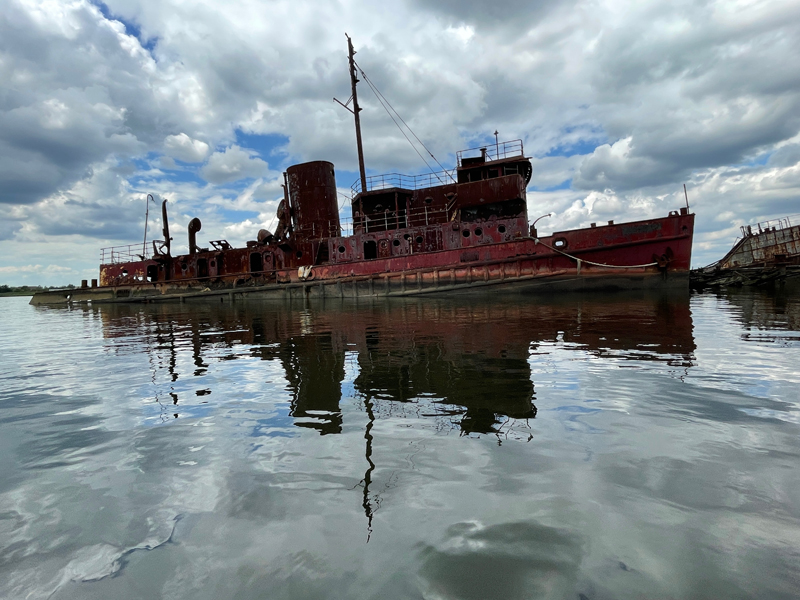
Elizabeth is a great appreciator of all aspects of the waterfront, natural and derelict.

In fact, Elizabeth wrote a book on the subject, “Silent Beaches” which tells the story of 10 areas in NYC where neglect and mismanagement have shaped the coast.
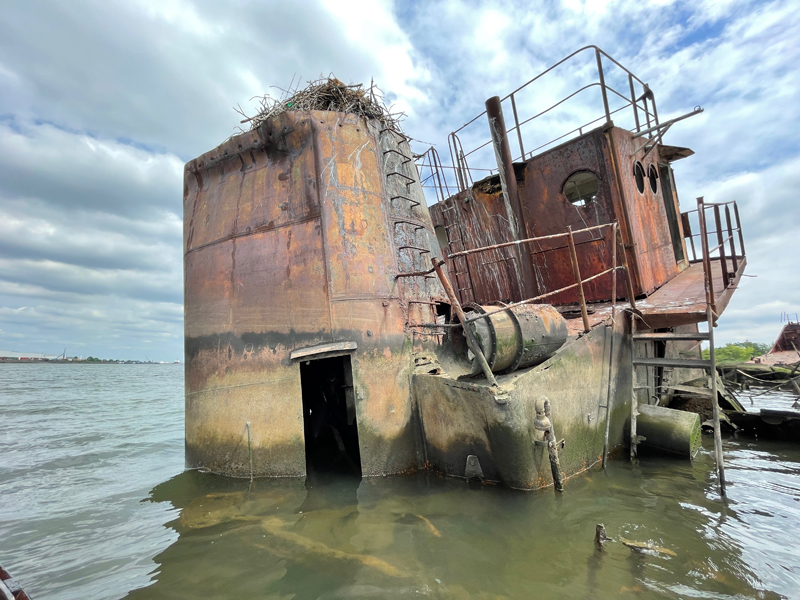
“What are you working on now?” I asked.
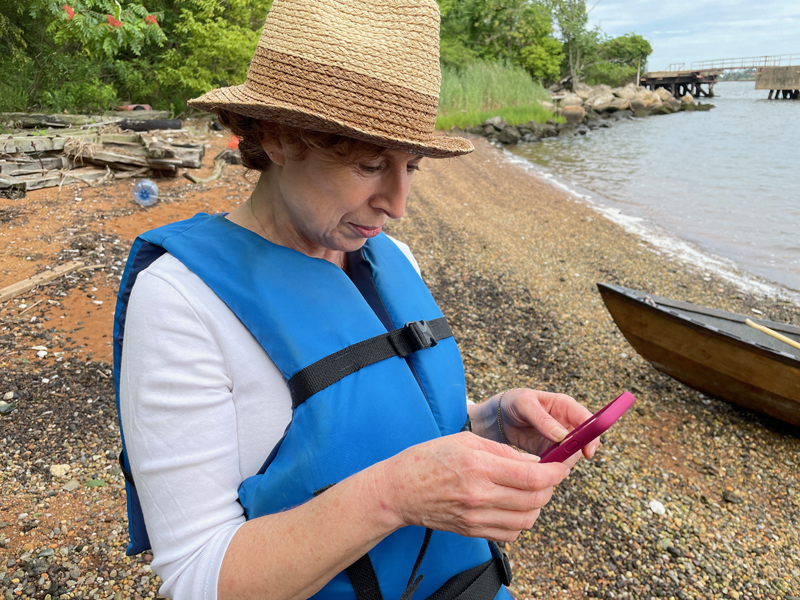
“I’m writing a children’s book!” she said, seeming almost surprised with herself.
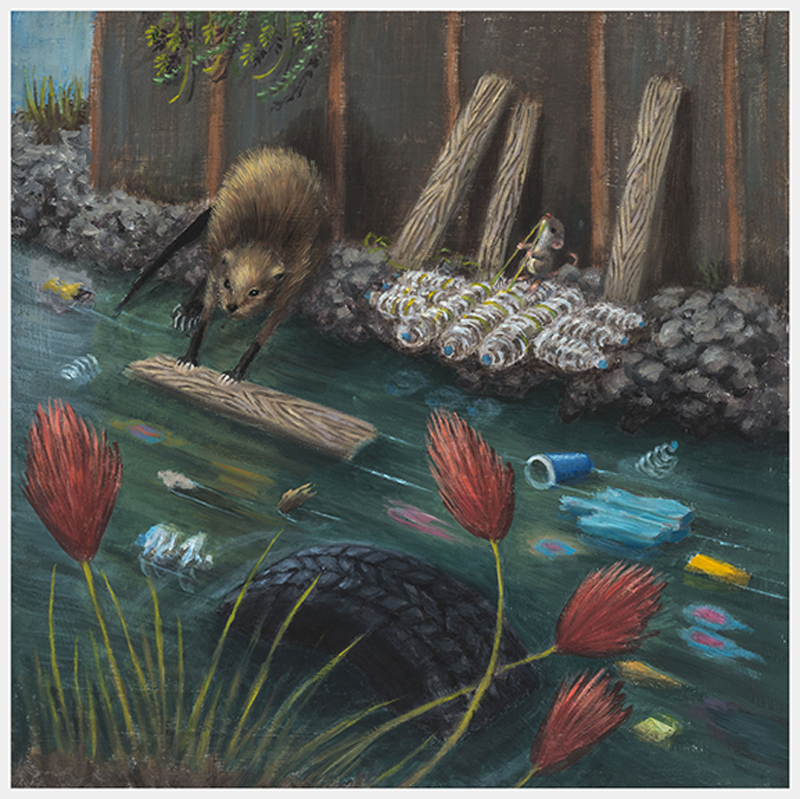
Elizabeth showed me the beautiful illustrations that will be part of the work.
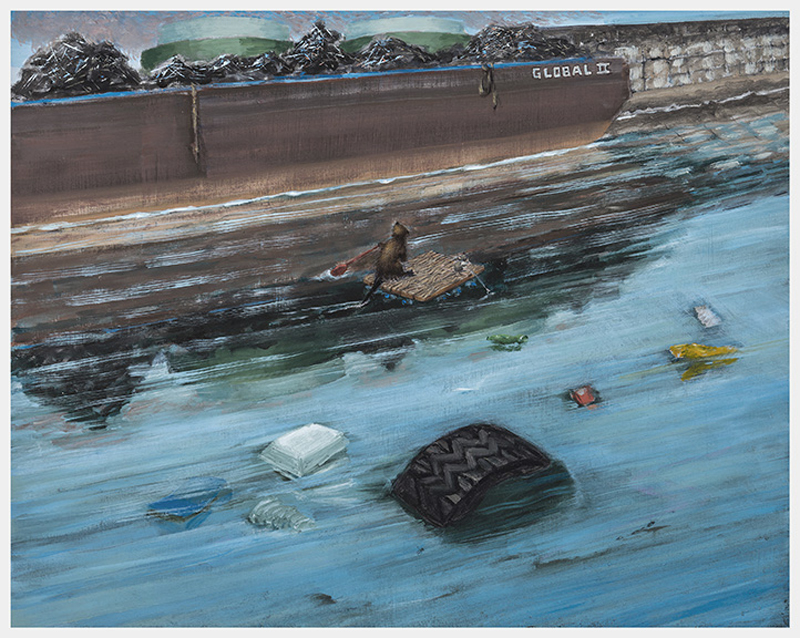
She is connecting the book to her research about the Gowanus canal.
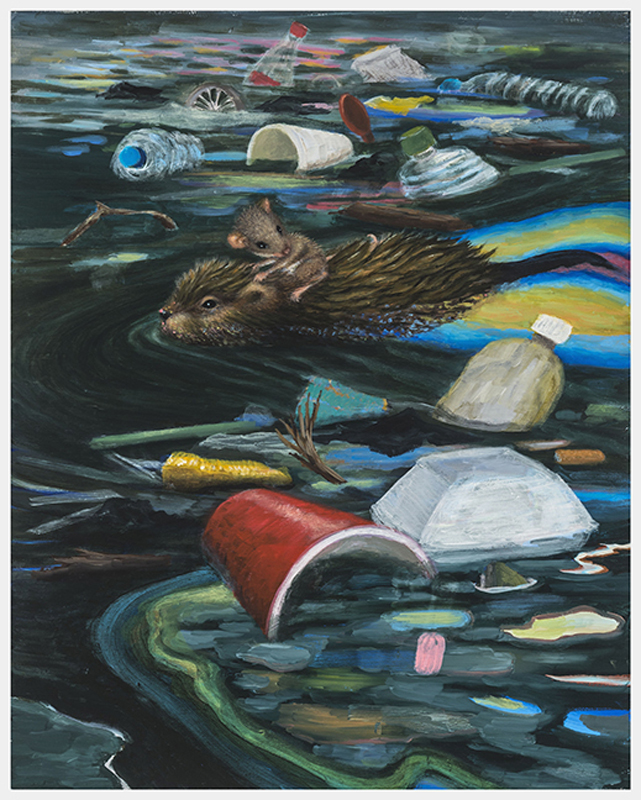
It’s about a muskrat and a mouse, orphaned by a storm who make their way among the wreckage.
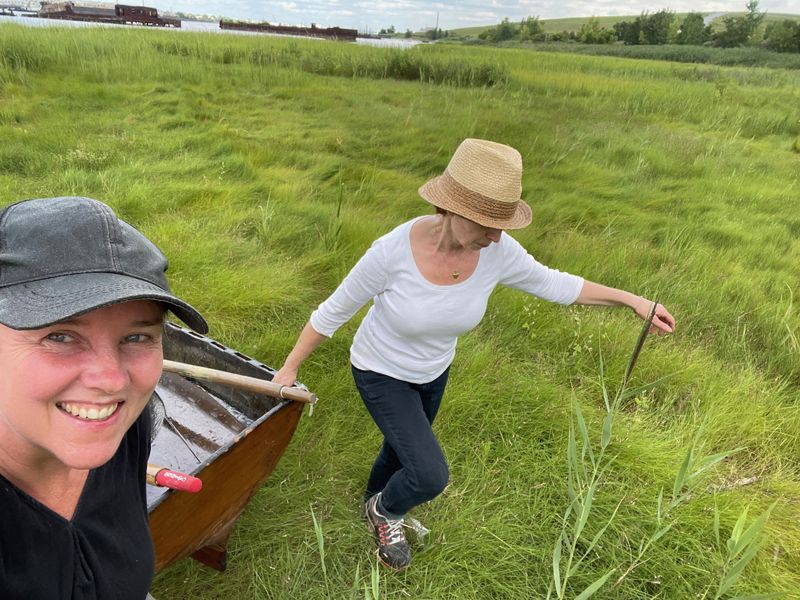
“Sounds like us,” I thought.
↑ Return to Top of Page ↑